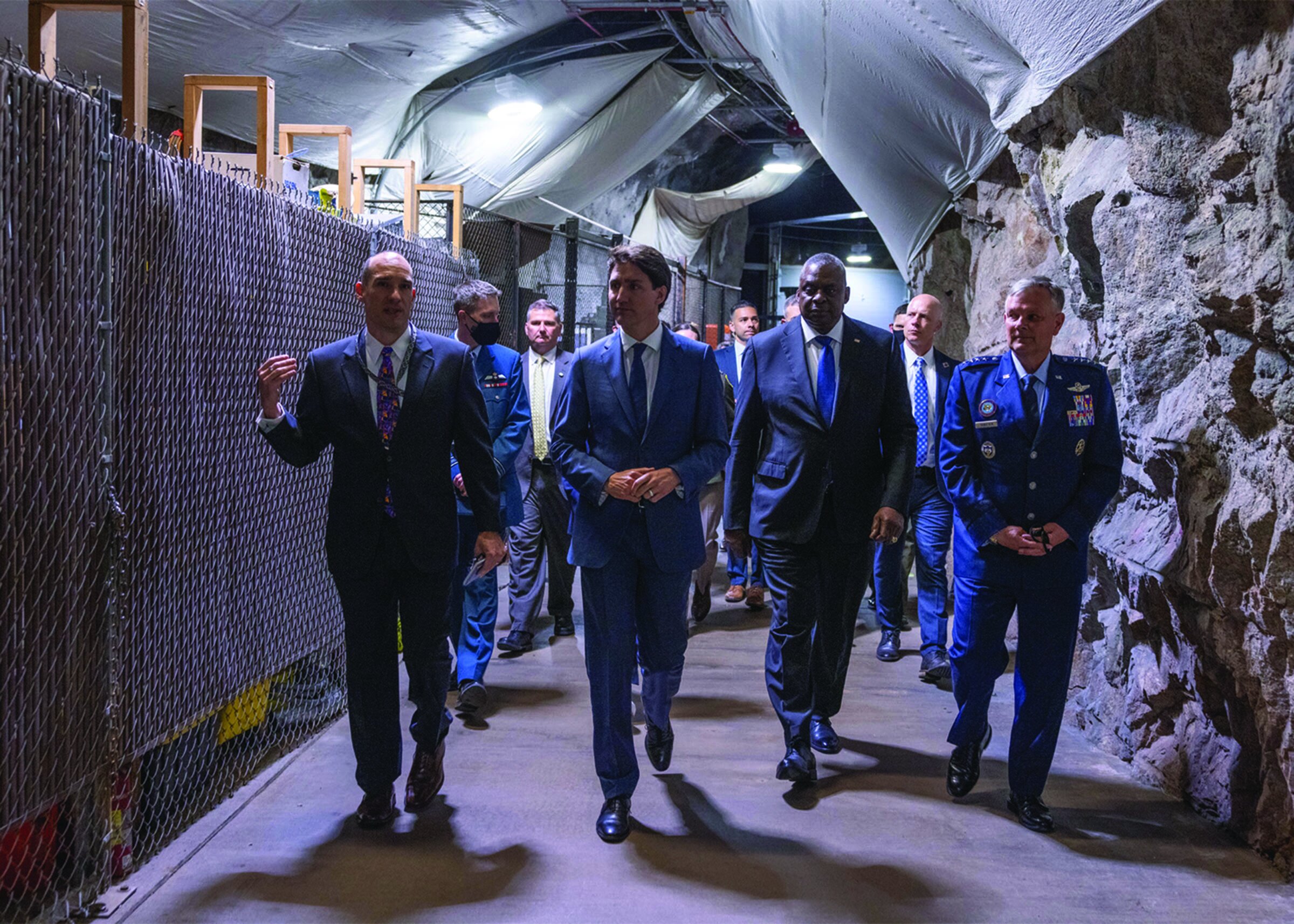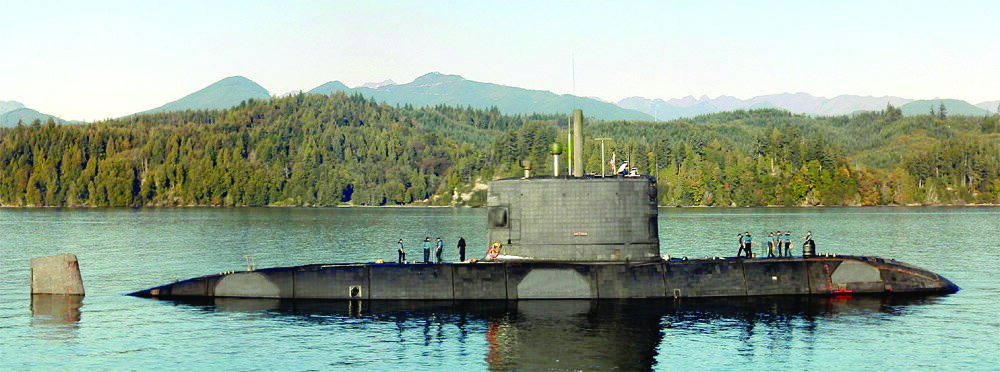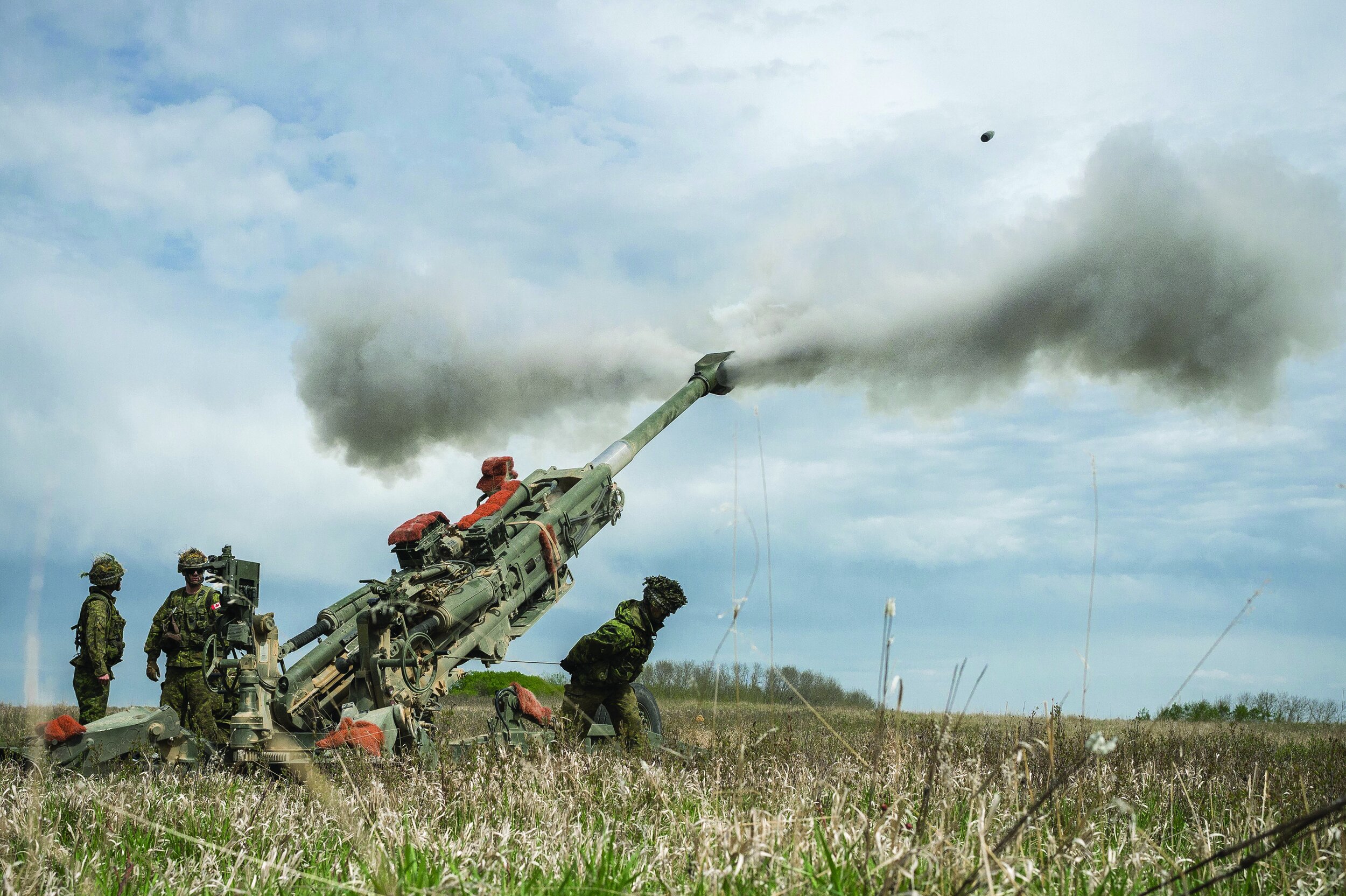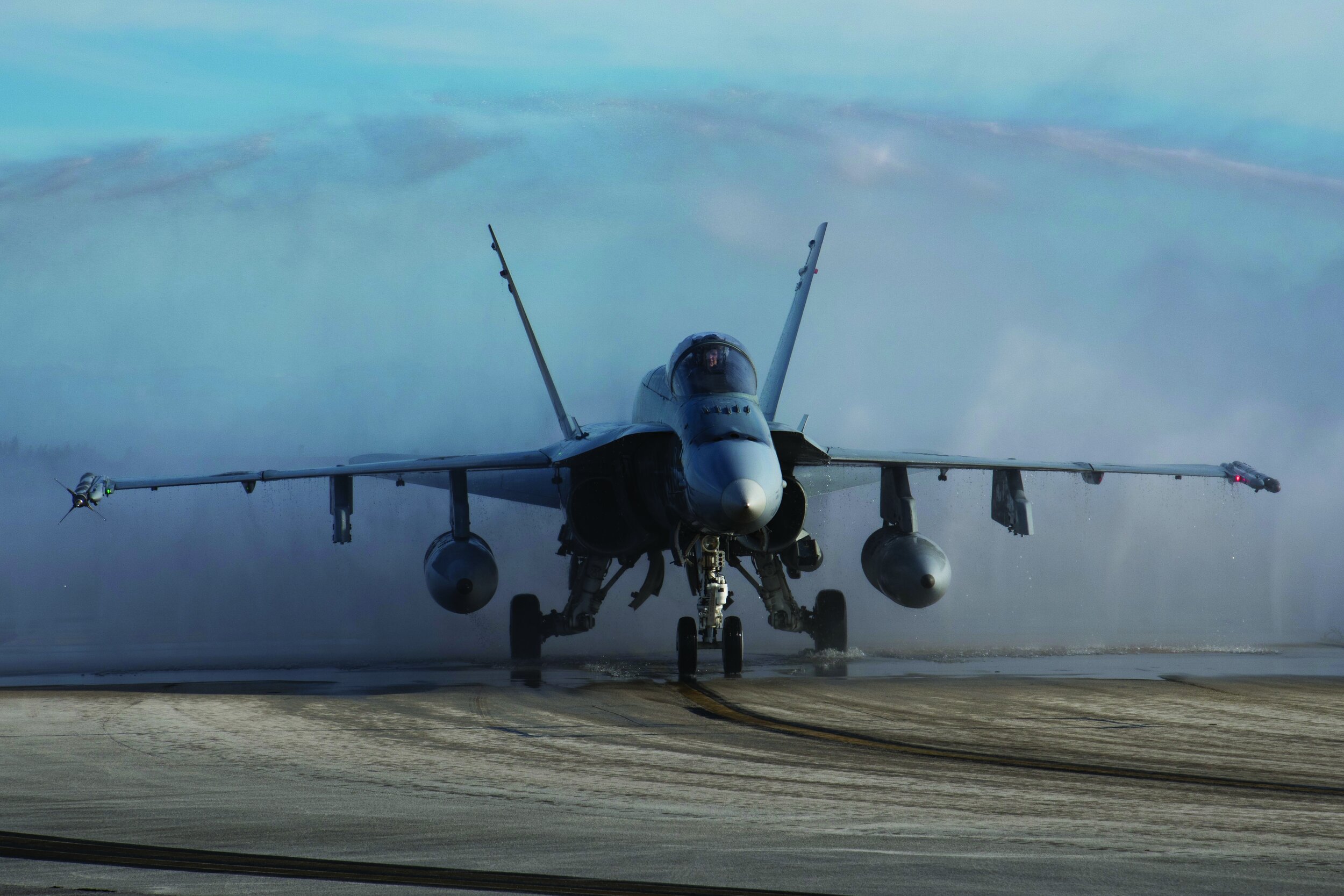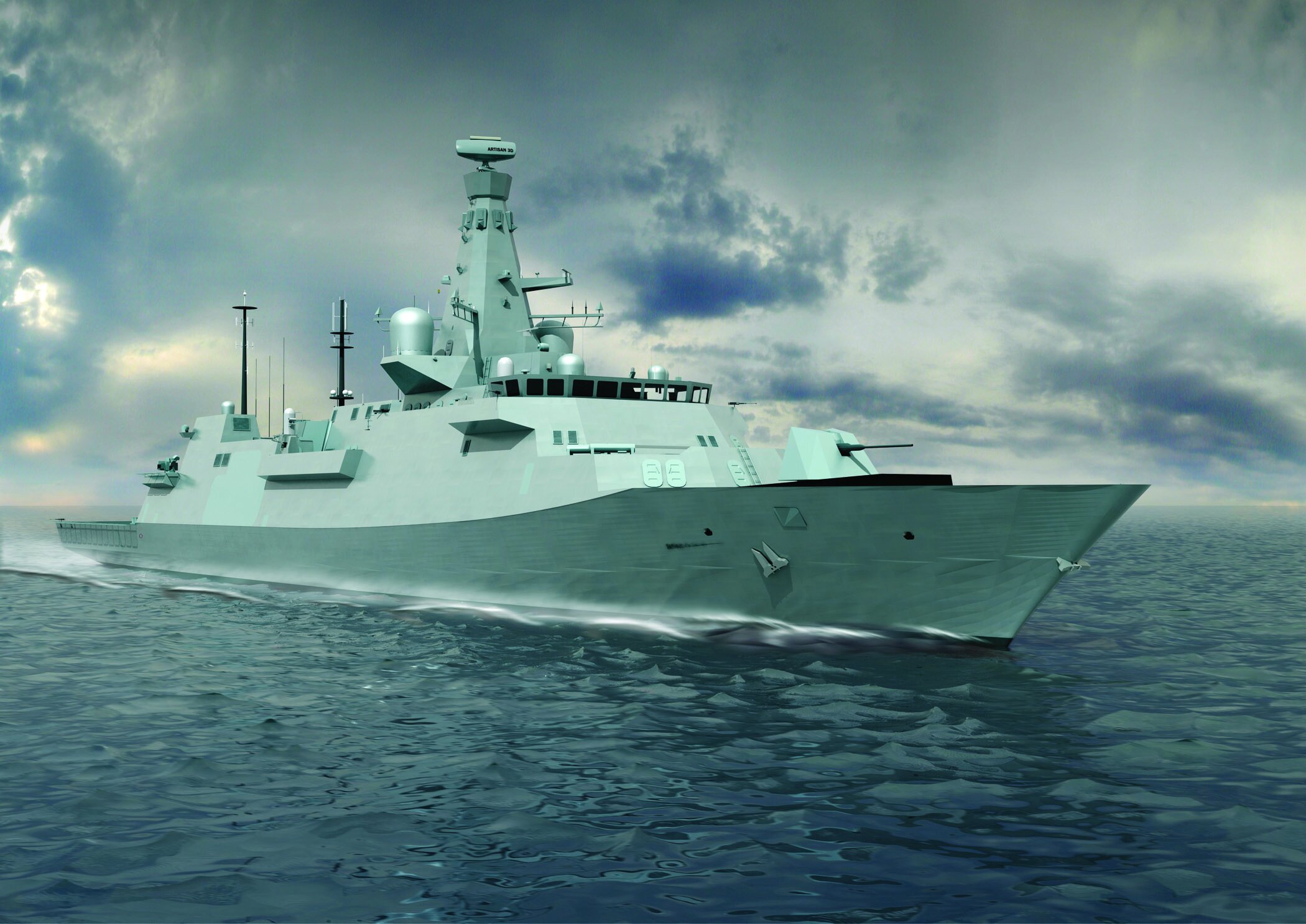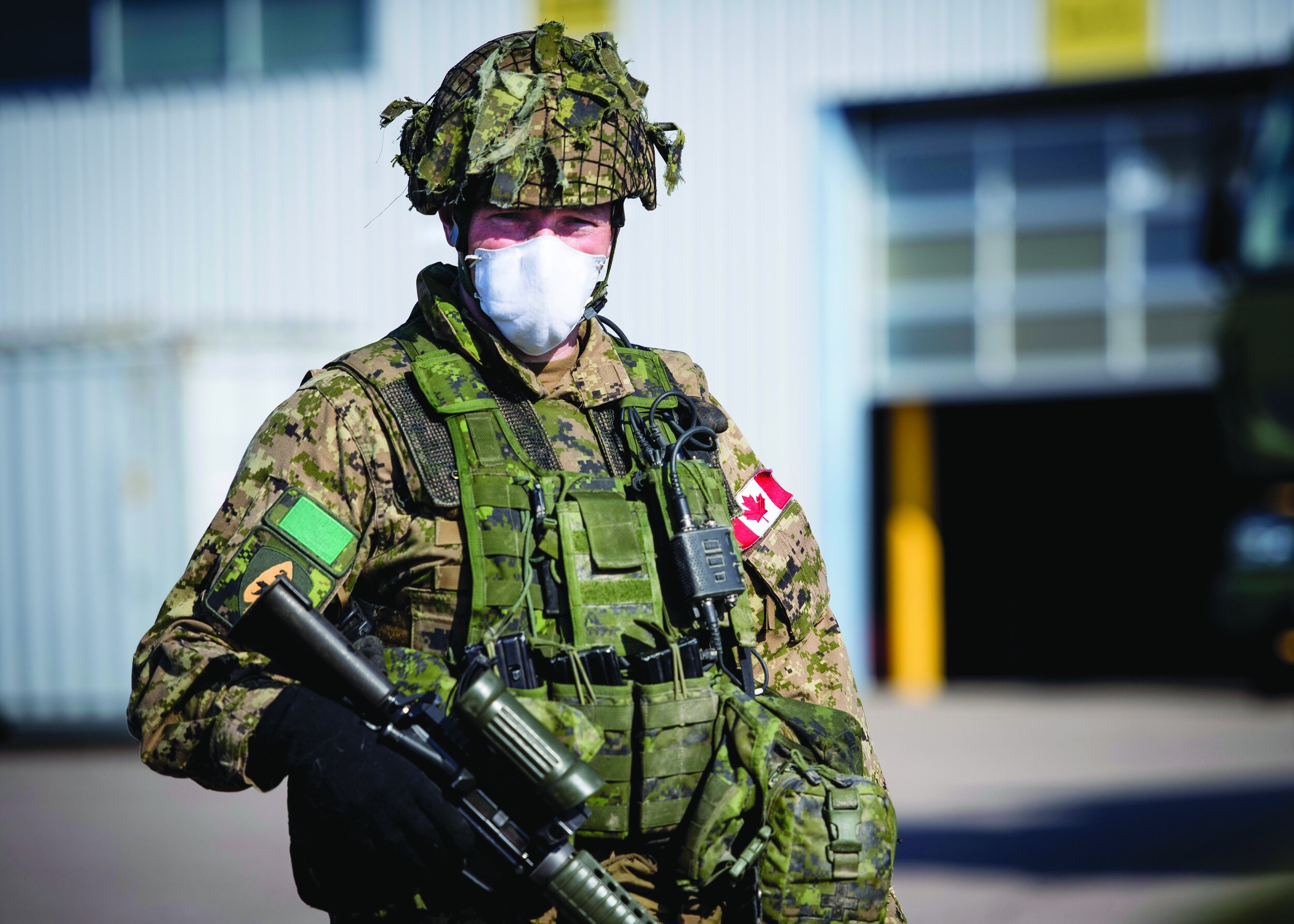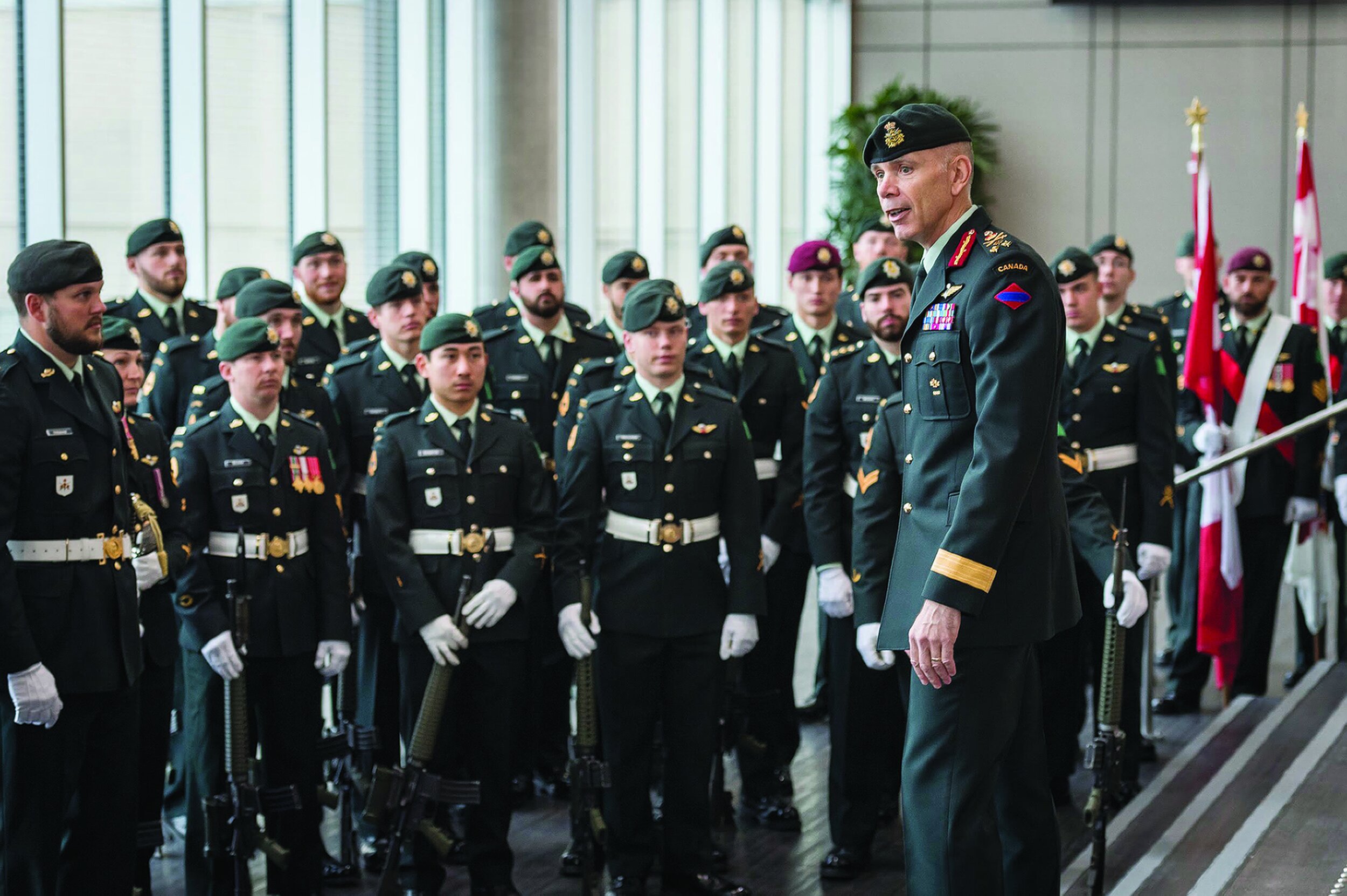HMS Glasgow, a Type 26 frigate, is shown here under construction in the United Kingdom. The design is the basis for the Canadian Surface Combatant. (UK MOD PHOTO)
By Dvid Pugliese
SO FAR THE RESULTS of the strategy have been limited. A limited number of vessels have been launched. But the National Shipbuilding Strategy initiative has garnered more than its share of controversy because of ongoing delays in the building of ships and budget overruns.
At the centre of that controversy is the country’s main program associated with the shipbuilding strategy - the Canadian Surface Combatant or CSC.
That project to build 15 warships is the largest single purchase in Canadian history.
The budget for the CSC was originally approved by Treasury Board at $26 billion.
In 2021 Parliamentary budget officer Yves Giroux estimated the project had climbed to at least $77 billion. But Giroux warned the CSC price tag could go even higher as further delays in the project will continue to drive the price upwards.
His prediction appears to be coming true. This year, MPs on the House of Commons Government Operations Committee said they now expect the cost for the 15 ships to be around $100 billion (the federal government has yet to officially confirm that figure).
The CSC fleet, based on the Type 26 design from BAE, will be built at Irving Shipbuilding in Halifax. Lockheed Martin Canada is the main contractor overseeing the project.
The first warship was supposed to have been delivered in 2025. But the Department of National Defence revealed Feb. 1 that the delivery of that vessel would now be delayed until 2030 or 2031. DND, however, has acknowledged it doesn’t know when the first CSC will actually be ready for operations. “We expect delivery of the first ship in 2030/2031, followed by an extensive sea trials period that will include weapons certification and the correspond- ing training of RCN sailors, leading to final acceptance,” National Defence spokeswoman Jessica Lamirande explained. No dates, however, were provided on when that final acceptance of the first ship would happen.
While the Liberal government says it is committed to the CSC project the actual construction contract has yet to be signed. So far, taxpayers have spent $738.7 million to support the options analysis and design phases of the surface combatant project.
Critics say there is still time for the Liberal government to exit from the increasingly expensive and risky program.
But that appears unlikely as the government has already started the process of acquiring some of the systems needed for at least the first three warships. In May of last year the U.S. government announced Canada requested four radars and four combat systems for the surface combatant project. Three radars and three combat systems would be for the installation on the first three ships. The fourth radar and combat system would be used by Canada at a test facility to be built in Dartmouth, NS.
Warning signs, however, have been building for years about problems with the CSC .
The Conservative government originally started the surface combatant project but in 2015 it acknowledged the cost was getting out of control and the program might have to be scaled back with the number of ships being cut.
But when the Liberal government came to power later that year the warnings were ignored. No changes were made to the project or how it was run. The result was that the costs significantly increased.
Parliamentary budget officer Giroux told MPs last year that part of the risk with the CSC project came from the Royal Canadian Navy’s decision to select the Type 26 frigate, which at the time existed only on the drawing board. “There doesn’t seem to be a clear rationale when it comes to explaining these cost increases,” Giroux noted during his appearance at a Commons committee last year. “I’m concerned.”
The entry of the Type 26 warship in the Canadian competition has indeed been controversial from the start and sparked complaints the procurement process was skewed to favour that vessel. Previously, the Liberal government said that only mature existing designs or designs of ships already in service with other navies would be accepted, on the grounds they could be built faster and would be less risky. Unproven designs can face challenges as problems are found once the vessel is in the water and operating. The criteria was later changed by the Canadian government for reasons that are not entirely clear. (The other ships that were in the Canadian competition were all proven and in service with allied navies.)
The Department of National Defence, however, has stood firm on its view the project is proceeding without major problems. DND officials have rejected the PBO’s cost estimates.
Instead they claim the overall CSC project cost will be between $56 billion and $60 billion. DND officials have insisted the cost will not go up beyond those figures and that the department has no intention of changing course or considering anything but the Type 26 design.
Troy Crosby, the assistant deputy minister of materiel at the DND, has denied the CSC project is in trouble. “I wouldn’t call it trouble,” he explained in 2021. “Is it hard? Is it challenging work? Absolutely. But I wouldn’t say we’re in trouble.”
In fact, last year the DND boasted to parliament that military equipment procurement is not only well managed but all programs are within budget and on schedule.
But Conservative MP Kelly McCauley, one of the few politicians who have raised concerns about the skyrocketing CSC cost, said that claim shows the DND is “detached from reality” when it comes to procurement.
Problems have also started to emerge in Australia, which is also building a new surface combatant fleet based on the Type 26 design. An Australian Defence department “engineer- ing team assessment” of the country’s frigate procurement highlighted concerns about the untested “immature” Type 26 ship design. The Australian defence department assessment – revealed in February by media outlets in that country – warned the new frigates would be “substantially” slower and have less range than originally intended. The assessment also noted the ship is heavier than originally planned and that will result in “increased fuel consumption and running costs.” The Australian defence engineering team warned it has “low confidence” the new vessels will meet the Royal Australian Navy’s needs.
The Royal Canadian Navy’s surface combatant is shown in this artist’s concept. (IMAGE COURTESY LOCKHEED MARTIN)
Canada’s Department of National Defence responded to the Australian report by noting the Type 26 ship design “is being evolved to meet Canadian requirements for a single class that meets the RCN’s needs.”
Canadian defence officials are also in regular contact with British and Australian officials involved in the construction of the Type 26 for their respective countries. “It should be recognized, however, that although the three nations are building ships based on a common Type 26 parent design, country specific requirements are such that the individual designs and design challenges are not always common between the three countries,” the DND added.
“With a base design completed and lessons learned from the build process on other programs, Canada’s overall risk is reduced,” Lockheed Martin added. “It is also important to highlight that Australia and Canada each have unique mission requirements and domestic industrial capabilities. Canada’s adjustments to the base design will meet the Royal Canadian Navy’s unique requirements, such as stealth and survivability, while also benefiting from progress achieved by allied countries using this design.”
While DND officials have been able to brush off issues with the Australian Type 26 frigates, another problem is looming on the horizon. Irving has recently come back to the federal government to argue that it needs hundreds of millions of tax dollars to upgrade its Halifax yard so it can build the CSC.
When Irving’s Halifax shipyard was selected in 2011 as the winner to build the new frigates and other combat vessels, among the requirements for winning the bid was that the yard had the capability to actually build the vessels. Under no circumstances would taxpayers need to contribute funding to outfit the facilities for the task.
But Irving has now presented the Liberal government with a request for at least $300 million (some reports indicate $500 million) so it can begin the construction of the CSC. The Liberal government is considering providing funds to the shipyard owned by one of Canada’s richest families.
Shortly before he left Irving Shipbuilding, the firm’s president Kevin Mooney told the Canadian Press news service that the shipyard needs several upgrades that were not originally anticipated for the CSC. Irving declined to discuss how much money it is seeking from taxpayers or what it would do with the funding if it was received.
But Mary Keith, Irving’s vice president of communications, said the Halifax Shipyard is on track to cut steel on the first surface combatant in 2024. “As is typical in any shipyard transitioning to a larger and more complex ship, (Irving Shipbuilding) has developed plans to optimize cost, schedule, and quality,” she noted in an email. “The business case demonstrates the significant benefit to the CSC program.”
Critics point out the procurement of the CSC is a textbook case in how not to acquire military equipment. They have also raised concerns about a lack of accountability for the overall program. Even though the original budget has increased from $25 billion to $100 billion, not one federal official has resigned or been fired.
Also absent are any real attempts to bring the costs under control.
Alan Williams, the former assistant deputy minister in charge of procurement at DND, likens the CSC to a train rolling down a hill without brakes. “You’re heading for disaster,” he warns. As the project’s eye-watering cost continues to increase, questions emerge about how other military programs might be affected. Will there be money for the Canadian Army for instance for its future needs if the government continues with a $100 billion frigate program?
Williams has argued that the C SC alone will draw between $213.5 and $219.6 billion dollars from defence budgets over a 30-year period when life-cycle costs are figured into the equation. Those costs are bound to jeopardize other equipment programs for the rest of the Canadian Armed Forces, he argues.
Williams and others suggest Canada could build an initial three Type 26 ships and then purchase other warships based on a proven design at a much reduced cost.
The PBO looked at such a scenario, presenting a cost analysis of two other ship designs: the FREMM European multi-mission frigate and the Type 31e, a class of general-purpose frigates planned for the United Kingdom’s Royal Navy. The cost of acquiring 15 FREMM ships is estimated at $71.1 billion, while the cost of a fleet of 15 ships based on the Type 31e design is estimated at $27.5 billion, the PBO noted. The PBO analysis also considered the cost of a mixed fleet: three of the Type 26 ships and 12 ships of either of the alternate designs. Under this scenario the costs increase to $71.9 billion for the mixed Type 26 and FREMM fleet, and $37.5 billion for the mixed Type 26 and Type 31e fleet.










